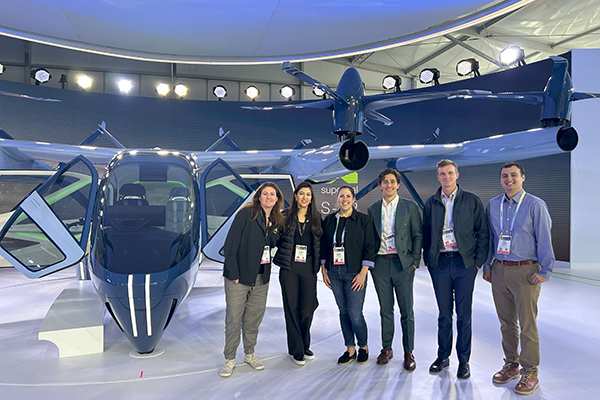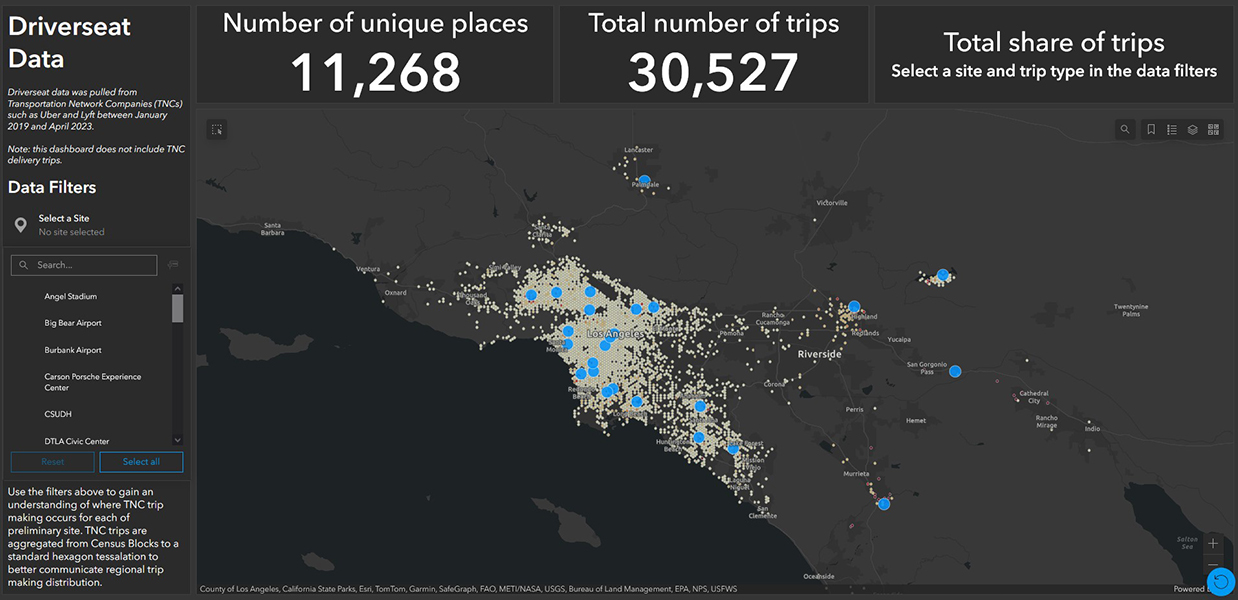Taking to the Skies
Partnering to Lead Advances in Urban Air Mobility
Taking to the Skies
Partnering to Lead Advances in Urban Air Mobility
Across the international landscape, momentum is building to implement Urban Air Mobility (UAM) as a form of transportation that can unlock a faster and cleaner alternative to long trips in a personal vehicle. Unveiled and excitedly showcased at the 2024 Consumer and Electronics Show (CES), numerous electric Vertical Take-Off & Landing (eVTOL) developers have been competing to be the first to market, and many in the transportation industry are observing with a watchful eye to see when and where these companies will literally and proverbially take off and land.
For the past 15 months, we have been partnering with Supernal, an eVTOL vehicle developer, to advance the thinking around bringing eVTOL to market in cities. As they continue their work on a safe, reliable, and sustainable vehicle, we were excited to align with their vision and support them in calling to action a collaborative discussion about the ground infrastructure needs of this emerging industry. The involvement of industry participants like vertiport developers, cities, and other key stakeholders will be crucial to prepare for the thoughtful and well-integrated use of these vehicles. Supernal’s vision for a scalable, electrified, clean-energy ecosystem that would integrate with existing transit infrastructure can only be realized in conjunction with well-sited vertiports, safe and suitable community plans, and well-appointed city regulations. Focusing on the city integration and the ground transportation side of air mobility, we are helping support their go-to-market vision.
Invited into key work streams by Supernal’s City Activation team, we launched a GIS-based Vertiport Site Suitability Analysis offering an overarching look at how vertiports could be sited in an optimal way for tapping into potential eVTOL demand, while also providing community benefit through thoughtful integration of ground transportation. Using our expertise in harnessing massive and complex datasets, we automated the extraction and analysis of vertiport suitability indicators that could be compared, apples-to-apples, across multiple potential sites. This automation created a tremendous time savings allowing the team to spend more time assessing site suitability than being inundated by data.
We followed the site suitability analysis with a Transportation Network Company (TNC) Market Analysis developing a dashboard to help illustrate TNC travel demand across the Southern California region. This data was used to assess the potential for medium- to long-distance TNC trip conversion to eVTOL trips for select proof-of-concept sites. This helped us get a sense of the travel demand market and the willingness to pay for trips that are driven by others.
We then expanded on the vertiport siting concept using visual storytelling to illustrate the “who” and “why” of an eVTOL trip. Graphic storyboards explored a set of eVTOL Journey Maps with a series of travelers and connected vertiport locations. This was especially useful in interrogating and exploring first/last mile assumptions, rider motivation assumptions, and associated elements that would be needed (beyond the vehicle and vertiport) to ensure a truly streamlined journey.
Wrapping up our holistic analysis, we developed an Implementation Requirements Study. In a collaborative effort engaging subject matter experts across the company, we investigated what it would take to go from vertiport concept to reality, implementing non-airport vertiports into a transportation network. Organized around the critical elements of addressing accessibility, safety, policy, land use compatibility, NEPA & CEQA, and approval processes, our study investigated these issues from both a 30,000-foot level as well as a Los Angeles region-specific level of detail.
How can we help you join the launch? Currently UAM, and more broadly Advanced Aerial Mobility (AAM), is still in the process of regulatory development; and the FAA, who leads airspace regulation and aircraft certification, has officially signaled it will be up to state and local authorities to determine how vertiports are implemented. To our knowledge, our study is a first-of-its-kind in advancing the industry toward implementation. We feel honored as contributors at the leading edge of this conversation and are eager to serve others with our findings from this exciting emerging technology. If you are interested in learning more about how we can assist with analysis and potential integration for your jurisdiction, let’s talk further. For more insights and considerations, contact us!
Contributors

Chelsea Richer
Principal
Email Me

Alex Sarno
Engineer/Planner
Email Me

Andy Meger
Engineer/Planner
Email Me

Sonia Anthoine
Senior Engineer/Planner
Email Me

Garvit Goyal
Engineer/Planner
Email Me

Huimei Jiang
Engineer/Planner
Email Me

Sean Reseigh
Senior Engineer/Planner
Email Me

Jeremy Klop
Director of Strategy
Email Me

Sarah Brandenberg
Regional Principal in Charge
Email Me

Ron Milam
Forecasting Practice Leader
Email Me

Melody Wu
Senior Engineer/Planner
Email Me

Peter Nguyen
Senior Technician
Email Me

Tyler Mathews
Former Intern
Email Me





